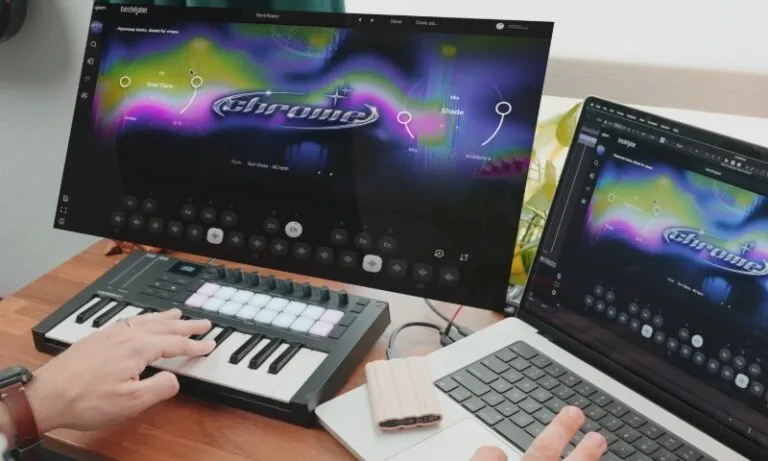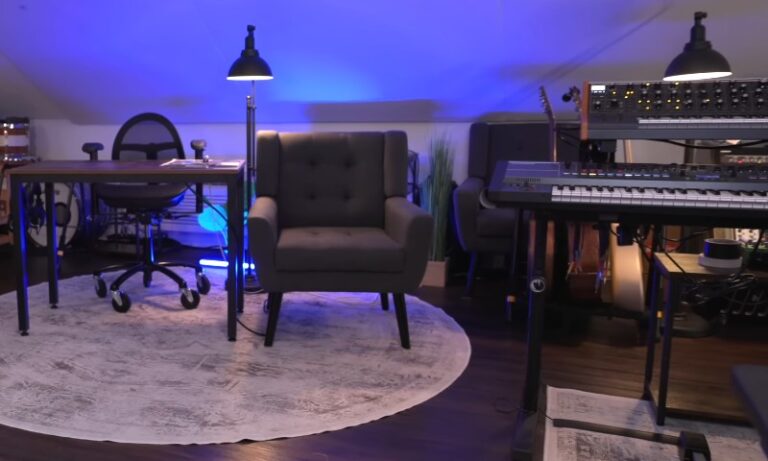Crafting a guitar sound that reflects personal expression adds meaning to playing. It separates casual imitation from genuine artistry.
Tone, style, and technique often get lumped together, but they serve distinct roles. Tone comes from equipment and how it’s used. Style shows in phrasing and rhythm choices.
The technique reflects the physical approach of how fingers meet strings and how hands interact with the instrument.
Key elements shaping individual sound include gear, personal insight, and musical knowledge. Together, they form a foundation that supports creative voice and sonic identity.
Start With You: The Inner Foundation
Musicians who tap into their inner world often find a sound that resonates with others. Personal experiences, emotions, and quirks shape the kind of music one wants to create.
Taking time to reflect can clarify whether the goal is connection, storytelling, technical expression, or crowd energy.
Once the purpose becomes clear, tone and musical direction start aligning naturally.
Influence helps shape ideas, but copying without transformation leads to creative dead-ends. Learn from great players, but run it all through personal filters. Everyone has something to say, but only some say it in a way that feels genuine.

Gear: Your Sonic Toolbox
Every aspect of a guitarist’s physical setup influences tone. Instrument design, electronics, and even minor components all shape what comes out of the speaker.
Personal sound starts taking form through the choices made here.
- Delivers directness, clarity, and sustain. Favored in rock, metal, and punk for its ability to cut through mixes with precision.
- Known for warm, rounded tones with rich resonance. Common in jazz, blues, and vintage rockabilly settings.
- Offers the best of both worlds. Adds body to the tone without sacrificing clarity. Works well in fusion, indie, and alternative rock.
Pickups translate string vibration into sound and deserve careful attention:
- Bright, clear, and detailed. Great for funk, country, surf, and blues. Expect more hum, but also more definition.
- It has a thicker, fuller tone with built-in noise cancellation. Ideal for heavy distortion, sustained solos, and smooth leads.
Accessories often get overlooked, but they matter more than expected:
- The gauge and material change the entire feel. Heavier strings provide fuller tone and a stronger low end. Lighter gauges offer easier bends and faster playability.
- Thickness and shape affect attack. A stiff pick cuts harder; a thinner one adds flexibility and softness.
- Cheap cables can suck tone. Poor shielding causes signal loss and noise, especially over long distances. Investing in quality cables preserves clarity.
Modification turns average gear into something personal:
- Swap pickups or pots for better tone control
- Try alternate tunings like DADGAD or open C for new textures
- Remove frets for a fretless guitar that allows glides and microtonal play
- Sand down the necks or swap bridges to improve comfort and sustain
Building a “Franken-guitar” doesn’t require elite skill, just curiosity, patience, and a willingness to fail before hitting gold.

Amplification: Shaping the Output
Amplifiers shape sound in bold, dramatic ways. What starts at the guitar is filtered, colored, and projected through the amp.
Choosing the right type can mean the difference between thin and expressive, dull and dynamic.
- Organic response and harmonic richness. React well to touch dynamics, soft picking cleans up the tone, hard strumming brings natural grit.
- Offer consistency, clarity, and a lower price point. More durable and predictable, ideal for beginners or clean tone lovers.
- Provide dozens of amp voices and effects in one unit. Excellent for players wanting flexibility without a wall of gear.
Amp settings act as a sculptor’s tools. Adjusting just one knob can shift a tone dramatically:
- Gain: Controls drive and saturation, essential for crunch and distortion
- EQ (Bass, Mid, Treble): Shapes tonal balance and presence in a mix
- Presence: Adds bite and clarity in higher frequencies
- Master Volume: Affects power tube saturation on tube amps and overall loudness
Amp tone is personal. Experimenting with settings builds confidence and reveals how gear reacts to playing style.
Digital rigs expand the creative toolkit without the need for loud cabinets or studio time.
- Easy access to amp simulations and pedal chains for beginners
AmpliTube, BIAS FX, Line 6 Helix Native: Software with detailed modeling for tone chasers
- Allow recording and tone tweaking in real time, opening space to layer and produce ideas
Digital gear can be a playground for sound design. Try emulating a bass amp for baritone guitars, stacking virtual amps, or running effects in reverse order. No rules, just exploration.

Effects: Your Sound’s Personality
Effects pedals add flavor and dimension.
- Distortion/Overdrive: Introduce grit, punch, and attitude.
- Delay & Reverb: Create space, echo, and depth.
- Modulation: Chorus, flanger, and phaser add texture and movement.
Starting with a few essential pedals helps maintain control. Knowing where each effect goes in the signal chain prevents muddiness.
True bypass switches can help preserve clean tone when effects aren’t in use.
Effects should enhance, not overwhelm. Creative stacking, like running a reverb before distortion or placing modulation after deal, can generate new sonic textures.
Let imagination lead, but keep ears sharp.
Musical Knowledge & Expression
Music theory provides clarity without limiting creativity. Rather than acting as a rigid framework, it serves as a toolbox for turning emotions into structured sound. A solid grasp of theory can unlock new progressions, lead to more expressive solos, and eliminate guesswork when composing.
Understanding relationships between notes makes improvisation more deliberate. Targeting chord tones during solos, outlining harmonic movement, and applying modal shifts all come naturally when theory is internalized. Players start to think in sound, not just shapes on a fretboard.
Ear training pushes that intuition even further. Recognizing melodic intervals and harmonic tension by ear builds precision. Identifying the sound of a major sixth or hearing the pull of a dominant seventh before resolving adds nuance to playing.
Drawing inspiration from non-guitar sources challenges habits and expands phrasing. Classical compositions encourage dynamic expression and melodic development. Jazz introduces rhythmic flexibility and harmonic complexity.
Staying Evolving, Yet Authentic

Guitar tone, like artistic voice, never fully settles. Growth in musicality reflects personal growth. Influences shift, emotions deepen, and technique improves with time. Each stage of development leaves its mark on sound.
Revisiting old recordings or compositions can reveal hidden habits, areas for improvement, or forgotten ideas that suddenly make sense. Sometimes, evolution is subtle, adjusting pick attack, swapping pedals, or favoring different keys. Other times it involves complete reinvention.
Both approaches hold value, as long as they come from real artistic curiosity.
Staying grounded in self-awareness prevents chasing trends at the cost of personal connection. Sound should reflect who you are, not who others expect you to be. Trying new things is essential, but filtering those experiments through personal taste creates consistency.
Originality isn’t defined by unfamiliarity. A tone can be warm and familiar yet still personal. Music that feels real connects more than music that tries too hard to stand apart. Great tone doesn’t come from avoiding structure or ignoring tradition it comes from using those tools to express something honest.
The Bottom Line
Signature sound reflects soul, experience, and curiosity. Gear and theory provide tools, but personality gives music life.
Experimenting, listening, and refining bring sonic identity into focus. Keep playing. Keep chasing that tone. It’s already inside, waiting to be shaped.
Related Posts:
- How to Build Your Unique Rap Style and Swag - A…
- How Do You Play Classico Tenacious D on Guitar? -…
- 15 Types of Guitar Strings and Their Unique Sounds
- How to Create a Unique Music Video - Fresh Ideas for…
- Can Sound Really Change Your Mood? The Emotional…
- What is the Standard Tuning for DADGAD? - Elevate…












